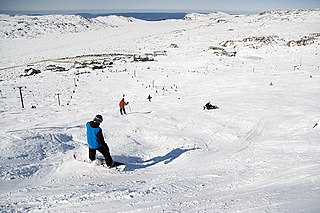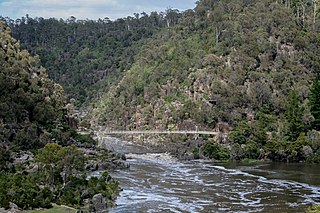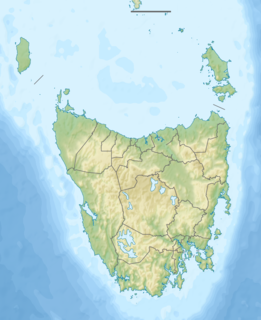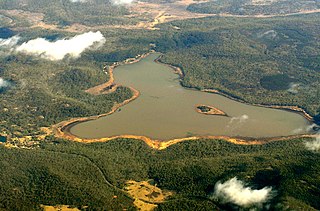| Macquarie | |
|---|---|
 | |
| Etymology | Lachlan Macquarie |
| Location | |
| Country | Australia |
| State | Tasmania |
| Region | Midlands (Tasmania) |
| Settlement | Ross |
| Physical characteristics | |
| Source | Tooms Lake |
| ⁃ location | Hobgoblin |
| ⁃ coordinates | 42°1′54″S147°45′53″E / 42.03167°S 147.76472°E |
| ⁃ elevation | 606 m (1,988 ft) |
| Mouth | South Esk River |
⁃ location | Longford |
⁃ coordinates | 41°35′14″S147°7′31″E / 41.58722°S 147.12528°E Coordinates: 41°35′14″S147°7′31″E / 41.58722°S 147.12528°E |
⁃ elevation | 189 m (620 ft) |
| Length | 189 km (117 mi) |
| Basin features | |
| River system | South Esk River |
| Tributaries | |
| ⁃ left | Tooms River, Blackman River, Isis River, Lake River |
| ⁃ right | Elizabeth River |
| [1] | |
The Macquarie River (Indigenous palawa kani : tinamarakunah [2] (pron. teen.ner.mair.rer.koon.ner)) is a major perennial river located in the Midlands region of Tasmania, Australia.

The Tasmanian or Palawa languages were the languages indigenous to the island of Tasmania, used by Aboriginal Tasmanians. The languages were last used for daily communication in the 1830s, although the terminal speaker, Fanny Cochrane Smith, survived until 1905.
Palawa kani is a constructed language created by the Tasmanian Aboriginal Centre as a composite Tasmanian language, based on reconstructed vocabulary from the limited accounts of the various languages once spoken by the eastern Aboriginal Tasmanians. The Centre wishes to keep the language private until it is established in the community, and claims copyright. However, languages are not copyrightable under Australian or international law.
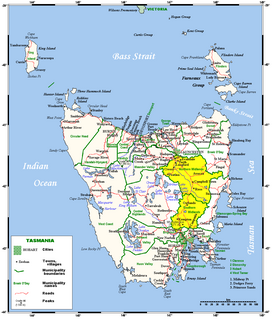
The Midlands is a region of Tasmania between Launceston and Hobart. It also refers to the relatively flat, dry agricultural area, so named because it covers the region between the two cities. Its name is probably also influenced from the Midlands in the United Kingdom. It lends its name to the Southern Midlands Council, Northern Midlands Council, and the Midland Highway. The region is sometimes conflated or confused with the adjacent region of the Central Highlands—with the added term Tasmania's heartland.





